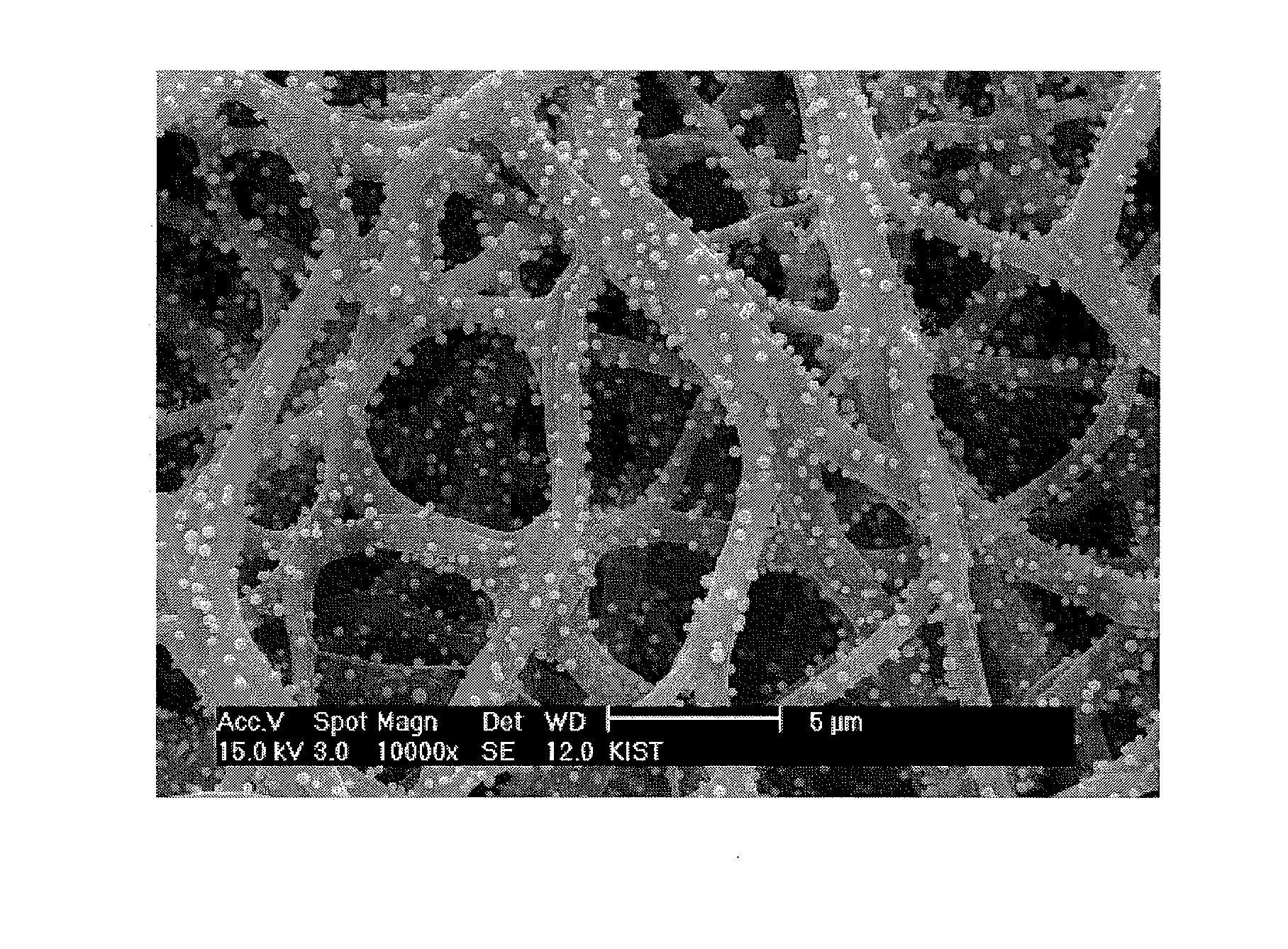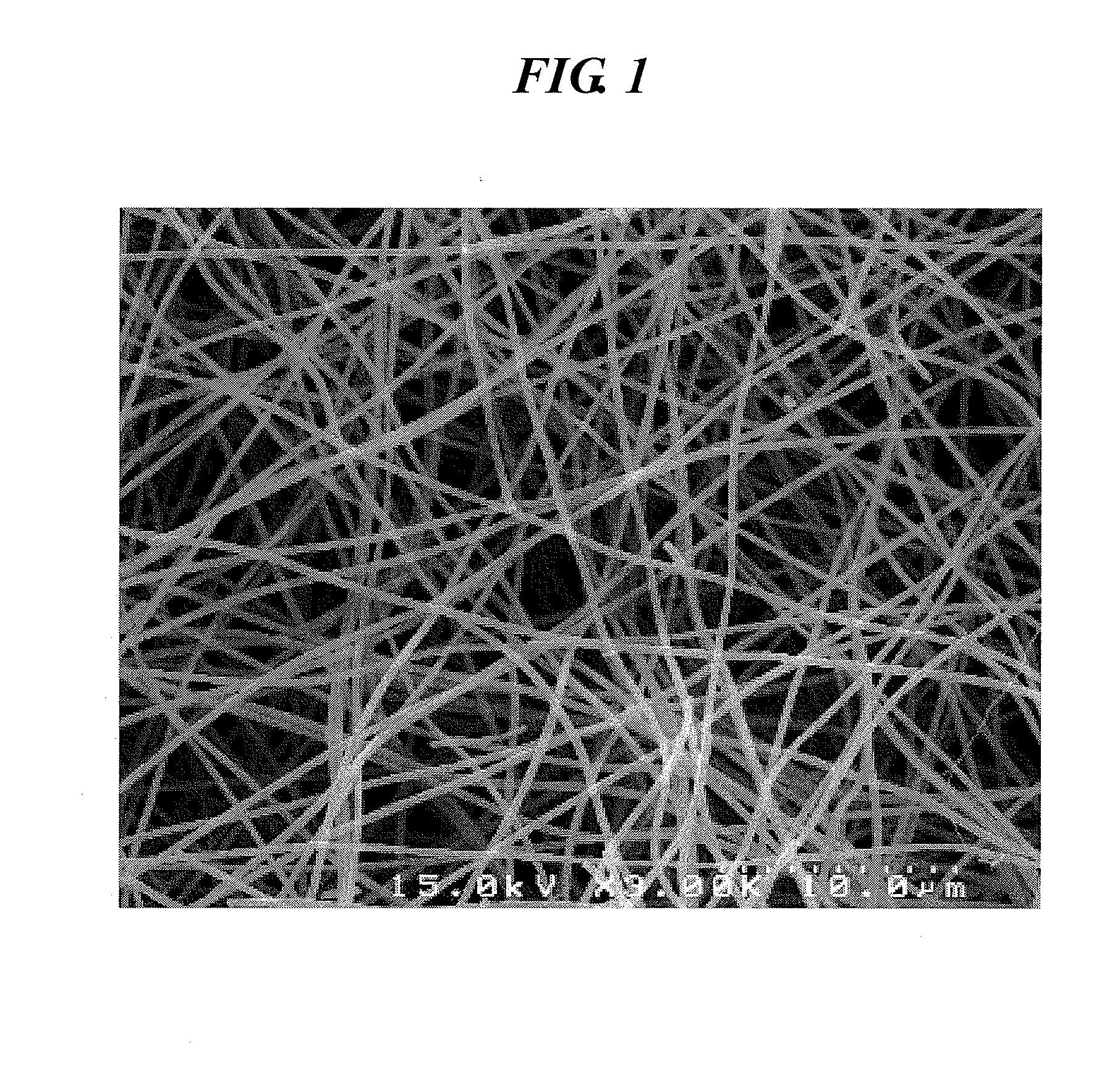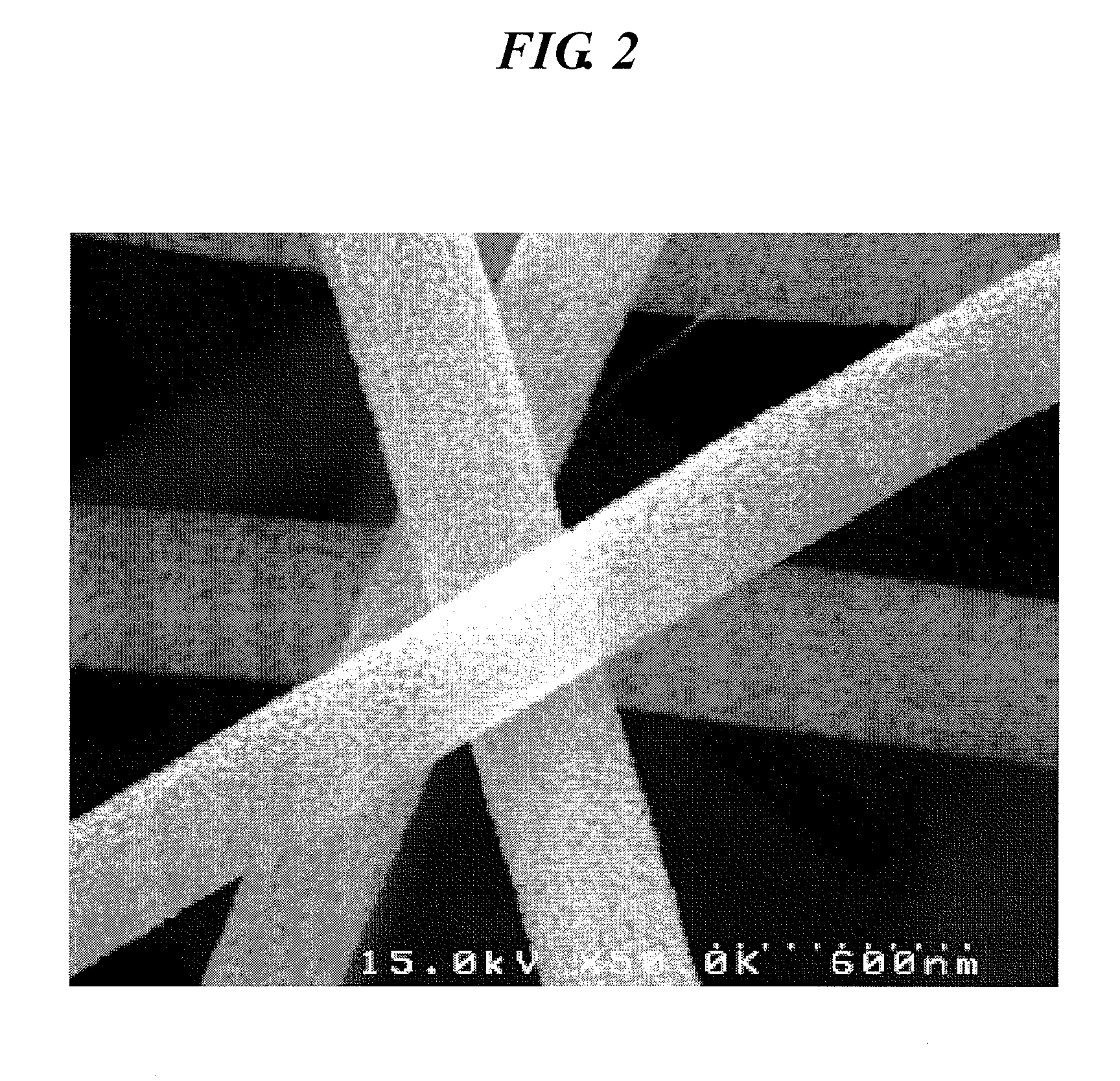Nanofiber and preparation method thereof
a technology of nanofibers and nanofibers, applied in the field of uniform nanofibers, can solve the problems of high process cost, low yield, difficult to produce metal, metal oxide or metal, etc., and achieve excellent structural, thermal, mechanical stability
- Summary
- Abstract
- Description
- Claims
- Application Information
AI Technical Summary
Benefits of technology
Problems solved by technology
Method used
Image
Examples
example 1
Fabrication of Tin Oxide Nanofiber
7.5 g of dimethyformamide (DMF, J. T. Baker) was placed in a 100 mL of bottle. 0.8 g of tin (IV) chloride (Mw 260.5) was added thereto and stirred until they were completely dissolved. To facilitate the spinning, 1 mL of acetic acid was added to the resulting solution and stirred for 1 min. A polymer mixture which is prepared by mixing 0.5 g of polyvinylpyrrolidone (PVP, Mw: 1,350,000, Tg: 180° C.) and 0.5 g of polymethylmetacrylate (PMMA, Mw: 350,000, Tg: 105° C.) in a weight ratio of 1:1 was added thereto and stirred until they were completely dissolved to prepare a tin oxide precursor / PVP-PMMA spinning solution. A small amount of cetyltrimethyl ammonium bromide (CTAB) was added to the spinning solution to facilitate the subsequent electrospinning. The spinning solution thus obtained was loaded in an amount of 10 mL into syringe and injected the surface of a current collector at a rate of 20 μl / min using a 30 G needle while maintaining a potential...
example 2
Fabrication of Zinc Oxide Nanofiber
7.5 g of dimethyformamide (DMF, J. T. Baker) was placed in a 100 mL of bottle. 0.8 g of zinc acetate (Mw 219.5) was added thereto and stirred until they were completely dissolved. To facilitate the spinning, 1 mL of acetic acid was added to the resulting solution and stirred for 1 min. A polymer mixture which is prepared by mixing 0.5 g of polyvinylpyrrolidone (PVP, Mw: 1,350,000, Tg: 180° C.) and 0.5 g of polymethylmetacrylate (PMMA, Mw: 350,000, Tg: 105° C.) in a weight ratio of 1:1, was added thereto and stirred until they were completely dissolved to prepared a zinc oxide precursor / PVP-PMMA spinning solution. A small amount of CTAB was added to the spinning solution to facilitate the subsequent electrospinning. The spinning solution thus obtained was loaded in an amount of 10 mL into syringe and injected the surface of a current collector at a rate of 15 μl / min using a 30 G needle while maintaining a potential difference of about 13-15 kV, to f...
example 3
7.5 g of dimethyformamide (DMF, J. T. Baker) was placed in a 100 mL of bottle. 0.8 g of tin (IV) chloride (Mw 260.5) was added thereto and stirred until they were completely dissolved. To facilitate the spinning, 1 mL of acetic acid was added to the resulting solution and stirred for 1 min. A polymer mixture which is prepared by mixing 0.5 g of polyvinylpyrrolidone (PVP, Mw: 1,350,000, Tg: 180° C.) and 0.5 g of polymethylmetacrylate (PMMA, Mw: 350,000, Tg: 105° C.) in a weight ratio of 1:1 was added thereto and stirred until they were completely dissolved to prepare a tin precursor / PVP-PMMA spinning solution. A small amount of CTAB was added to the spinning solution to facilitate the subsequent electrospinning. The spinning solution thus obtained was loaded in an amount of 10 mL into syringe and injected the surface of a current collector at a rate of 20 μl / min using a 30 G needle while maintaining a potential difference of about 13-15 kV, to form an ultr...
PUM
| Property | Measurement | Unit |
|---|---|---|
| porosity | aaaaa | aaaaa |
| pore diameter | aaaaa | aaaaa |
| aspect ratio | aaaaa | aaaaa |
Abstract
Description
Claims
Application Information
 Login to View More
Login to View More - R&D
- Intellectual Property
- Life Sciences
- Materials
- Tech Scout
- Unparalleled Data Quality
- Higher Quality Content
- 60% Fewer Hallucinations
Browse by: Latest US Patents, China's latest patents, Technical Efficacy Thesaurus, Application Domain, Technology Topic, Popular Technical Reports.
© 2025 PatSnap. All rights reserved.Legal|Privacy policy|Modern Slavery Act Transparency Statement|Sitemap|About US| Contact US: help@patsnap.com



